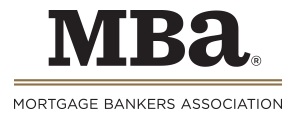WASHINGTON, D.C. – May 7, 2015 – (RealEstateRama) — The delinquency rate for mortgage loans on one-to-four-unit residential properties decreased to a seasonally adjusted rate of 5.54 percent of all loans outstanding at the end of the first quarter of 2015. This was the lowest level since the second quarter of 2007. The delinquency rate decreased 14 basis points from the previous quarter, and 57 basis points from one year ago, according to the Mortgage Bankers Association’s (MBA) National Delinquency Survey.
The delinquency rate includes loans that are at least one payment past due but does not include loans in the process of foreclosure. The percentage of loans in the foreclosure process at the end of the first quarter was 2.22 percent, down five basis points from the fourth quarter of 2014 and 43 basis points lower than the same quarter one year ago. This was the lowest foreclosure inventory rate since the fourth quarter of 2007.
The percentage of loans on which foreclosure actions were started during the first quarter was 0.45 percent, a decrease of one basis point from the previous quarter, and was unchanged compared to the first quarter of 2014.
The serious delinquency rate, the percentage of loans that are 90 days or more past due or in the process of foreclosure, was 4.24 percent, a decrease of 28 basis points from the previous quarter, and a decrease of 80 basis points from the first quarter of 2014.
“Delinquency rates and the percentage of loans in foreclosure continued to fall in the first quarter and are now at their lowest levels since 2007,” said Joel Kan, MBA’s Associate Vice President of Industry Surveys and Forecasting. “The job market continues to grow, and this is the most important fundamental improving mortgage performance. Additionally, home prices continued to rise, as did the pace of sales, thus increasing equity levels and enabling struggling borrowers to sell if needed.”
“The foreclosure inventory rate has decreased in the last twelve quarters, and now is at the lowest level since the fourth quarter of 2007. The rate, at 2.22 percent, was about half of where it was at its peak in 2010. With a declining 90+ day delinquency rate and the improving credit quality of new loans, we expect that the foreclosure inventory rate will continue to decline in coming quarters. Foreclosure starts decreased one basis point from the previous quarter, and continue to fluctuate from quarter to quarter mainly due to state-level differences in the speed of the foreclosure process. At 0.45 percent, the level of foreclosure starts is at its long run average.
“FHA loans had a decrease in overall delinquencies, including a non-adjusted 47 basis point decrease in the 90 day or more delinquent category. However, there was a 12 basis point increase in the percentage of loans in foreclosure and a nine basis point increase in foreclosure starts in the first quarter as distressed loans entered the foreclosure process. A large portion of the weakness in FHA performance came from the 2008, 2009, and 2010 vintages.
“Around 40 percent of loans serviced are in judicial states and these states continue to have a foreclosure inventory rate that is well above that of non-judicial states. For states where the judicial process is more frequently used, 3.64 percent of loans serviced were in the foreclosure process, compared to 1.22 percent in non-judicial states. States that utilize both judicial and non-judicial foreclosure processes had a foreclosure inventory rate closer that of to the non-judicial states at 1.43 percent.
“At the state level, 27 states saw a decline in foreclosure inventory rates over the quarter. New Jersey, New York, and Florida had the highest percent of loans in foreclosure in the nation in the first quarter. Florida’s foreclosure inventory rate peaked at 14.5 percent in 2010, and was down to 4.8 percent in the most recent quarter, helped by rapidly improving local economies and job markets, leading to increased housing demand, strong home price growth, and more opportunities for distressed loans to be resolved.
“On the other hand, New Jersey’s percentage of loans in foreclosure peaked at nine percent in 2013, and even though the rate has decreased in recent quarters to 7.7 percent, improvement has been slow relative to other states due to New Jersey’s long foreclosure timelines and a less robust housing market. Foreclosure starts increased in 26 states, but this measure has become more volatile with state-level mediation requirements and changing servicing procedures dictating changes from quarter to quarter.
“Legacy loans continue to account for the majority of all troubled mortgages. Within loans that were seriously delinquent (either more than 90 days delinquent or in the foreclosure process), 73 percent of those loans were originated in 2007 or earlier, even as the overall rate of serious delinquencies for those cohorts decreases. More recent loan vintages, specifically loans originated in 2012 and later, continue to exhibit low serious delinquency rates.”
Change from last quarter (Fourth Quarter of 2014)
On a seasonally adjusted basis, the overall delinquency rate decreased 14 basis points to 5.54 percent. For prime loans, the delinquency rate decreased seven basis points to 3.18 percent and for subprime loans the delinquency rate decreased 90 basis points to 17.60 percent. The FHA delinquency rate fell by 63 basis points to 9.10 percent. VA loans saw the only increase across loans types, increasing four basis points to 5.02 percent in the first quarter.
The non-seasonally adjusted percentage of loans in foreclosure, also known as the foreclosure inventory rate, decreased to 2.22 percent on aggregate. Both prime and subprime loans had decreases, with the prime foreclosure inventory rate decreasing four basis points to 1.32 percent and the subprime foreclosure inventory rate decreasing 67 basis points to 8.96 percent. The foreclosure inventory rate for FHA loans increased 12 basis points to 2.64 percent while the rate for VA loans increased two basis points to 1.41 percent.
In terms of foreclosure starts, on an unadjusted basis, overall foreclosure starts were down one basis point to 0.45 percent. Prime loan foreclosure starts had an increase of one basis point to 0.28 percent, while the foreclosure starts rate for subprime loans decreased 34 basis points to 1.39 percent. For FHA loans, the unadjusted foreclosure starts rate increased by nine basis points to 0.70 percent, while the foreclosure starts rate increased by one basis point for VA loans to 0.37 percent.
Change from last year (First Quarter of 2014)
Given the challenges in interpreting the true seasonal effects in these data when comparing quarter to quarter changes, it is important to highlight the year-over-year changes of the non-seasonally adjusted results.
The non-seasonally adjusted delinquency rate for all loans, excluding loans in foreclosure, decreased 55 basis points from the same quarter a year ago. Prime loans had a 33 basis point decrease in delinquency rate, while the delinquency rate for subprime loans decreased 214 basis points. The delinquency rate decreased 65 basis points for FHA loans and 35 basis points for VA loans over the year.
Compared with the first quarter of 2014, the foreclosure inventory rate for prime loans decreased 37 basis points and the rate for subprime loans decreased 110 basis points, while the foreclosure inventory rate decreased 36 basis points for FHA loans, and decreased 27 basis points for VA loans.
Over the past year, the non-seasonally adjusted foreclosure starts rate decreased one basis point for prime loans and increased six basis points for subprime loans. The foreclosure starts rate increased six basis points for FHA loans, and decreased two basis points for VA loans compared to the same quarter one a year ago.
If you are not a member of the media and would like to purchase the survey, please visit www.mba.org/NDSor e-mail ">.
© 2015 Mortgage Bankers Association (MBA). All rights reserved, except as explicitly granted.
Data are from a proprietary paid subscription service of MBA and are provided to the media as a courtesy, solely for use as background reference. No part of the data may be reproduced, stored in a retrieval system, transmitted or redistributed in any form or by any means, including electronic, mechanical, photocopying, recording or otherwise. Permission is granted to news media to reproduce limited data in text articles. Data may not be reproduced in tabular or graphical form without MBA’s prior written consent.
The above data were obtained in cooperation with the Mortgage Bankers Association (MBA), which produces the National Delinquency Survey (NDS). The NDS, which has been conducted since 1953, covers 41 million loans on one- to four- unit residential properties, representing approximately 88 percent of all “first-lien” residential mortgage loans outstanding in the United States. Loans surveyed were reported by over 100 lenders, including mortgage bank, commercial banks, and thrifts.











